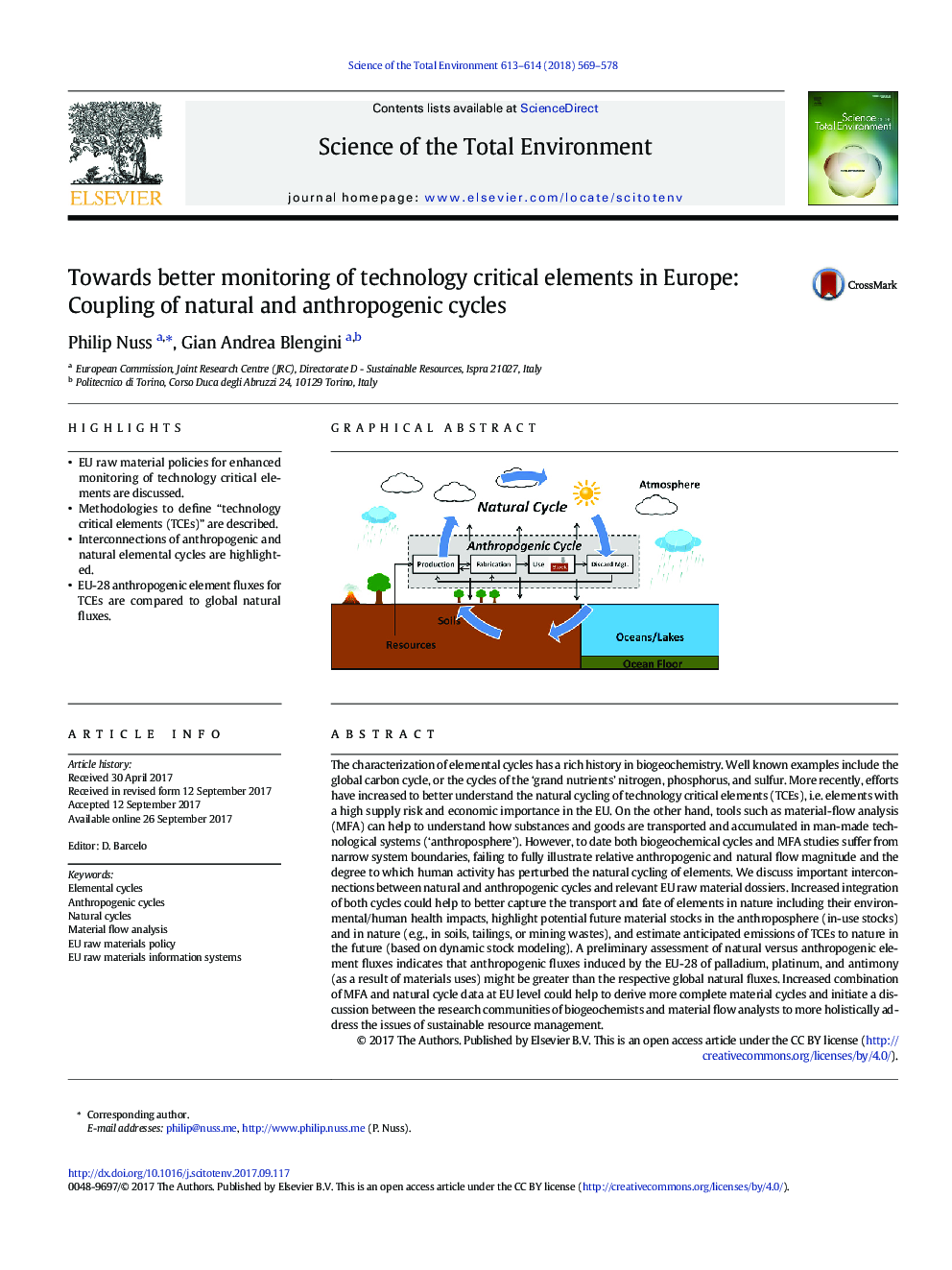| کد مقاله | کد نشریه | سال انتشار | مقاله انگلیسی | نسخه تمام متن |
|---|---|---|---|---|
| 5750120 | 1619690 | 2018 | 10 صفحه PDF | دانلود رایگان |
- EU raw material policies for enhanced monitoring of technology critical elements are discussed.
- Methodologies to define “technology critical elements (TCEs)” are described.
- Interconnections of anthropogenic and natural elemental cycles are highlighted.
- EU-28 anthropogenic element fluxes for TCEs are compared to global natural fluxes.
The characterization of elemental cycles has a rich history in biogeochemistry. Well known examples include the global carbon cycle, or the cycles of the 'grand nutrients' nitrogen, phosphorus, and sulfur. More recently, efforts have increased to better understand the natural cycling of technology critical elements (TCEs), i.e. elements with a high supply risk and economic importance in the EU. On the other hand, tools such as material-flow analysis (MFA) can help to understand how substances and goods are transported and accumulated in man-made technological systems ('anthroposphere'). However, to date both biogeochemical cycles and MFA studies suffer from narrow system boundaries, failing to fully illustrate relative anthropogenic and natural flow magnitude and the degree to which human activity has perturbed the natural cycling of elements. We discuss important interconnections between natural and anthropogenic cycles and relevant EU raw material dossiers. Increased integration of both cycles could help to better capture the transport and fate of elements in nature including their environmental/human health impacts, highlight potential future material stocks in the anthroposphere (in-use stocks) and in nature (e.g., in soils, tailings, or mining wastes), and estimate anticipated emissions of TCEs to nature in the future (based on dynamic stock modeling). A preliminary assessment of natural versus anthropogenic element fluxes indicates that anthropogenic fluxes induced by the EU-28 of palladium, platinum, and antimony (as a result of materials uses) might be greater than the respective global natural fluxes. Increased combination of MFA and natural cycle data at EU level could help to derive more complete material cycles and initiate a discussion between the research communities of biogeochemists and material flow analysts to more holistically address the issues of sustainable resource management.
105
Journal: Science of The Total Environment - Volumes 613â614, 1 February 2018, Pages 569-578
